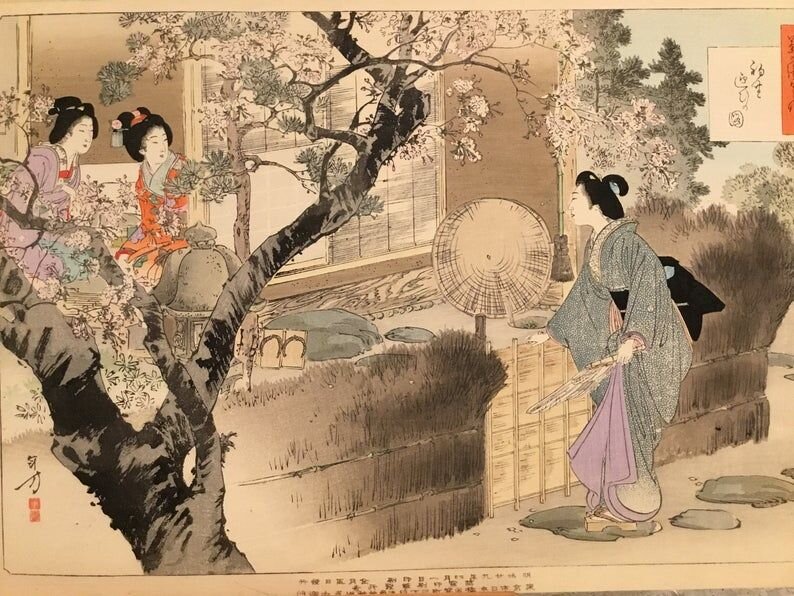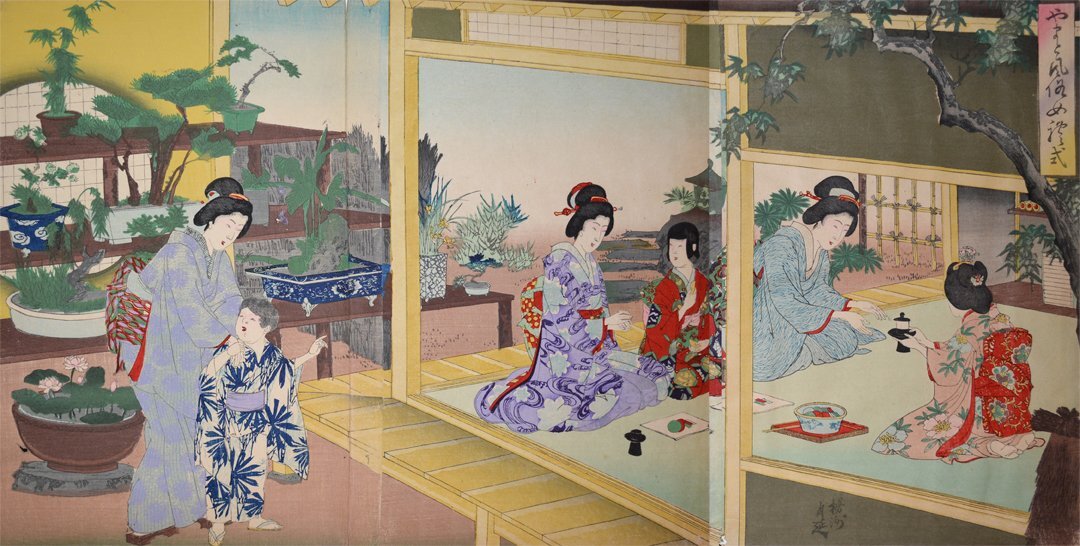Welcome
Here I document my adventures in travel, lifestyle, and thinking differently with the hope of broadening people’s perspectives. I hope you enjoy!

Here I document my adventures in travel, lifestyle, and thinking differently with the hope of broadening people’s perspectives. I hope you enjoy!
“It was the ritual instituted by the Zen monks of successively drinking tea out of a bowl before the image of Bodhi Dharma, which laid the foundations of the tea ceremony”
-Okakura Kakuzo in The Book of Tea (50)
Water Lily by Kawashima Minoru
Appearing Again: Naniwaya Okita by Kitagawa Utamaro
“What is common to Zen and the art of tea is the constant attempt both make at simplification. The elimination of the unnecessary is achieved by Zen in its intuitive grasp of final reality; by the art of tea, in the way of living typified by serving tea in the tearoom.”
-D.T. Suzuki in Zen and Japanese Culture (271)
“Beginning in the early seventh century, the Japanese periodically sent official delegations to China. One such group of diplomats and scholars left Japan in AD. 804. When they returned, their party included a Japanese monk named Eichu (743-816) who had just completed thirty years of Buddhist study in Ch'ang-an. Eichu brought tea with him, probably in the form of leaves pressed into a small ball, a form then popular in China.
Eichu seems to have simultaneously acquired a taste for tea and Chinese philosophy. He may have been acquainted with Lu Yu’s Classic of Tea or even the Pai-chang ch'ing-kuei. At any rate, the Nihon Koki (a work preserved in the Imperial Depository of Nara) reports that Eichu offered tea to Emperor Saga (785—842) on the shores of Lake Biwa in AD. 815, an event generally considered the beginning of the Japanese Tea tradition.
The Emperor must have enjoyed his bowl of tea because he ordered tea seeds sown in neighboring provinces and founded a government tea farm in Kyoto. The use of this small crop was probably cofined to that of the nobles and priests. Aristocratic poetry of the era refers to the pleasure of casual tea-drinking in pastoral settings, but religious tea ritual conducted in the Chinese fashion also thrived.”
-Jennifer Anderson in An Introduction to Japanese Tea Ritual (23)
“The simplicity and purism of the tea-room resulted from emulation of the Zen monastery”
-Okakura Kakuzo in The Book of Tea (50)
Teahouse at Koishikawa the morning after a snowfall by Katsushika Hokusai
Collection 885 by Haku Maki
“The art of tea is most intimately connected with Zen not only in its practical development but principally in the observance of the spirit that runs through the ceremony itself”
-D.T. Suzuki in Zen and Japanese Culture (273)
Entering a Tea Room by Mizuno Toshikata
Grandfather's teahouse, Meguro by Ando Hiroshige
Tea-house scene: a man on a balcony points towards China by Utamaro Kitagawa
Daisenin by Masao Ido
Katsura Palace (Snow Scene) by Bakufu Ohno
The Great Buddha at Kamakura by Kawase Hasui
Fuji from the Katakura Tea Fields in Suruga by Katsushika Hokusai
Preparing Tea at Miyako Odori Festival by Suizan Miki
Tea Ceremony Utensils by Bakufu Ohno
Calling for guests to come and sit in the tea room by Mizuno Toshikata
Tea Master (Sajin) by Totoya Hokkei
Blossom time in Tokyo by Helen Hyde
Collection 885 by Haku Maki
Chatting in a small garden shelter near the tea house by Mizuno Toshikata
Water Lily by Kawashima Minoru
Appearing Again: Naniwaya Okita by Kitagawa Utamaro
Tea House by Kiyoshi Saito
Teahouse at Koishikawa the morning after a snowfall by Katsushika Hokusai
Zen Meditation at Eiheiji Temple by Onda Akio
Tea Ceremony by Mizuno Toshikata
Tea House in Azalea Garden by Yoshida Hiroshi
Chado (Tea Boy) by Hatsuyama Shigeru
Kamakura Daibutsu by Tokuriki Tomikichiro
Ike no chaya (tea house) by Uehara Konen
Womens Customs and Ceremonies by Toyohara Chikanobu
White Lotus by Ogata Korin
Making the washing place in the tea-ceremony room ready by Mizuno Toshikata



























While much remains to be seen, said and learned, I hope this gallery has given you an introduction to Japanese Tea Culture as presented in woodblock prints. I have purposefully chosen to leave the guiding questions open so that you, the viewer, can ponder them for yourself. Rather than focus on simply sharing the meaning I found in these images, perhaps they have sparked some inspiration of your own. If you are interested in learning more, please find some good starting points in the references section. Now, off to make a cup of tea!